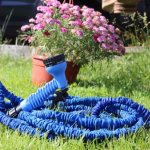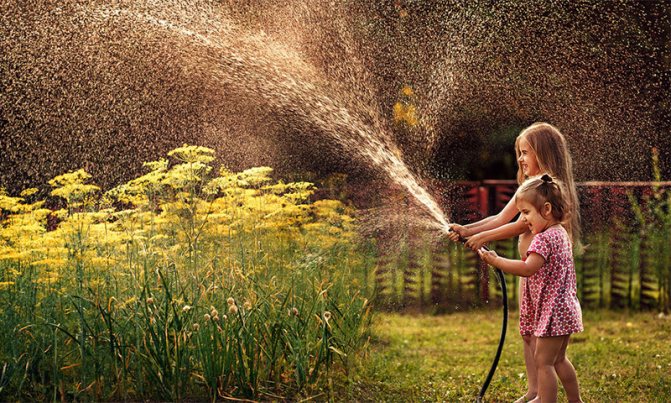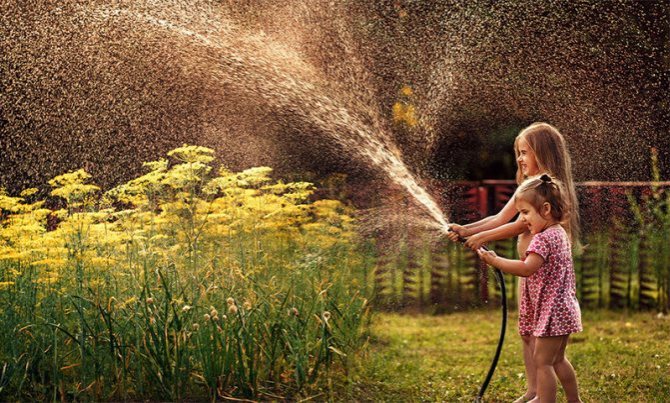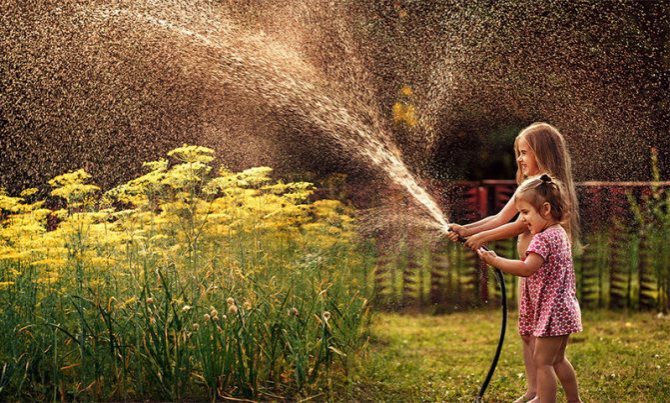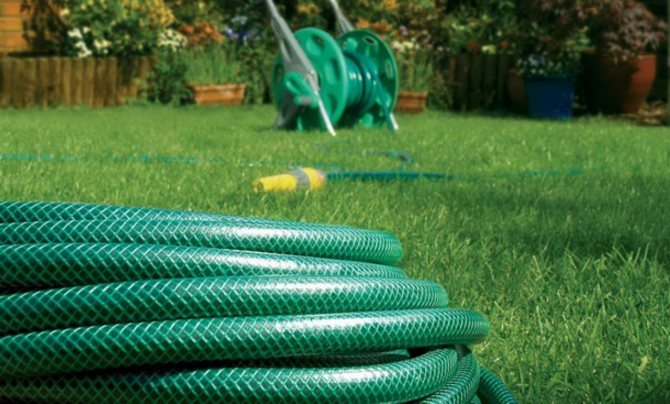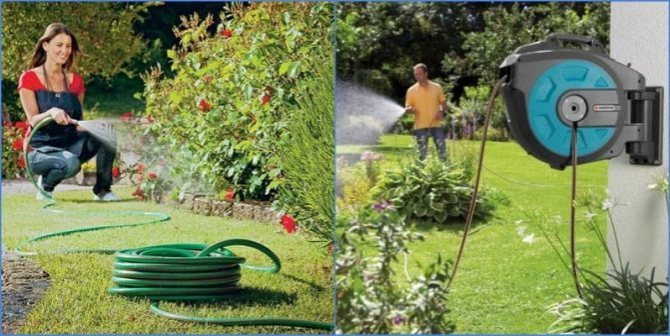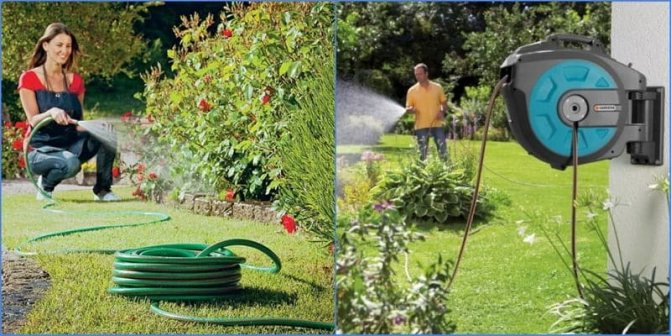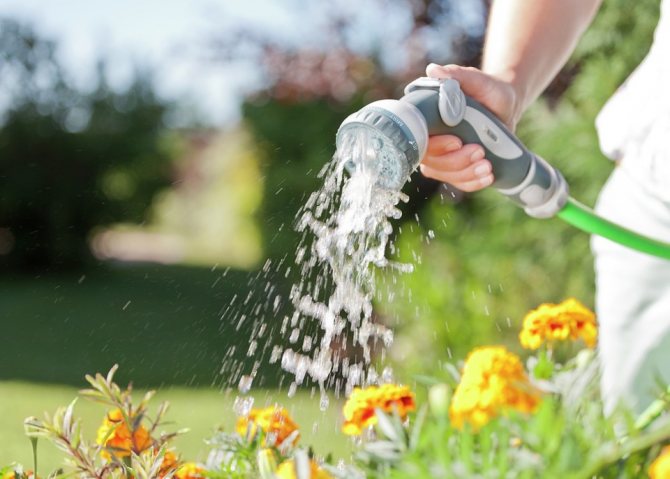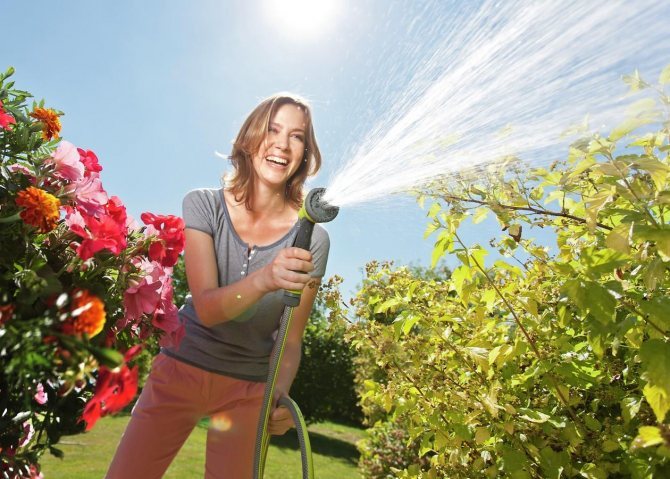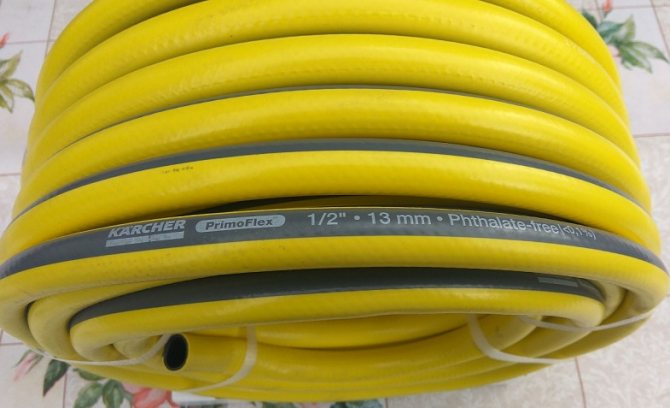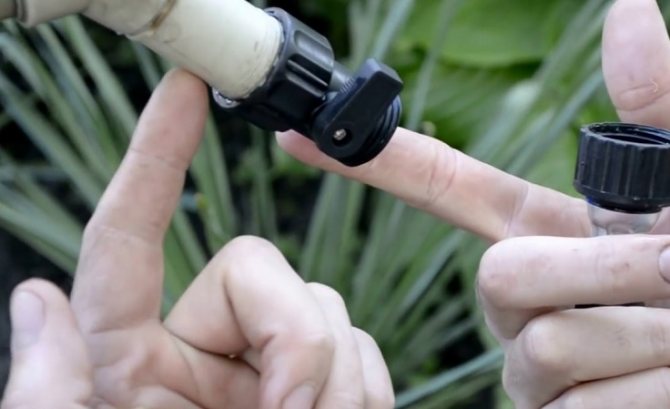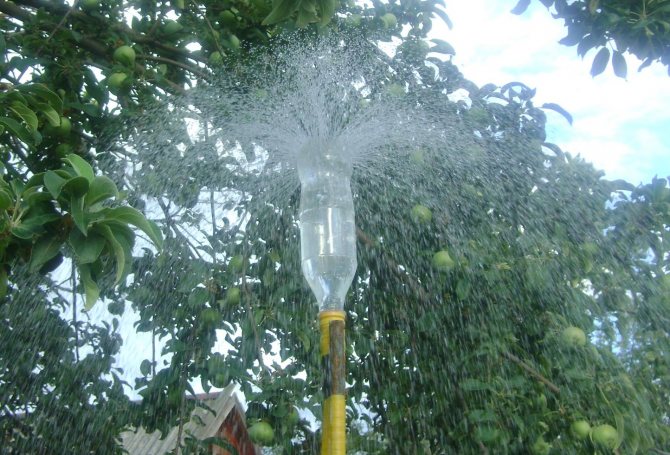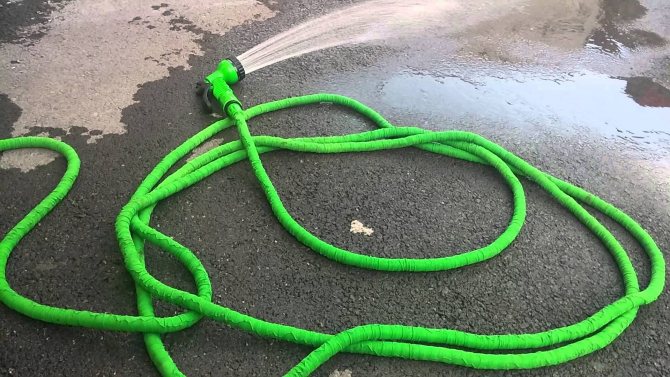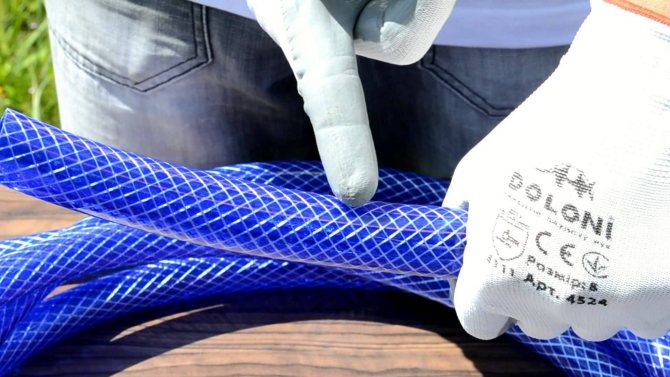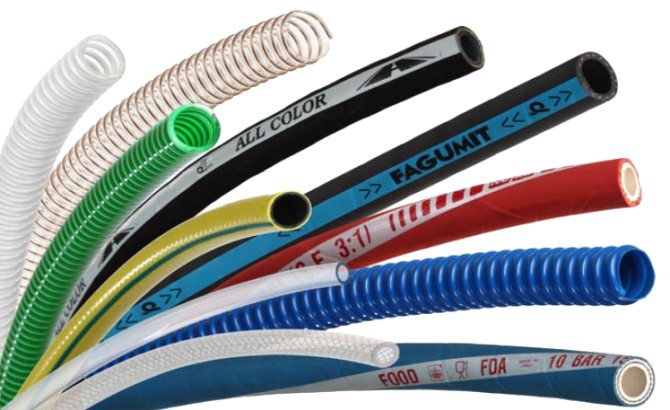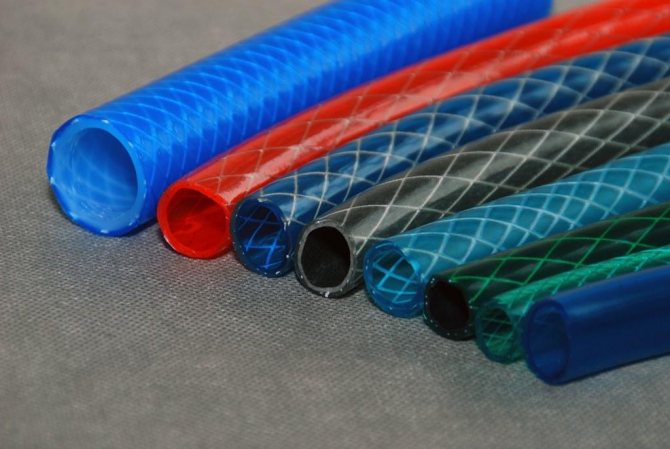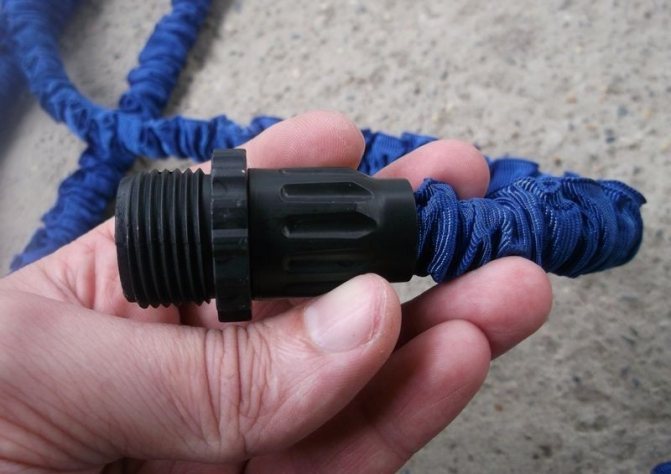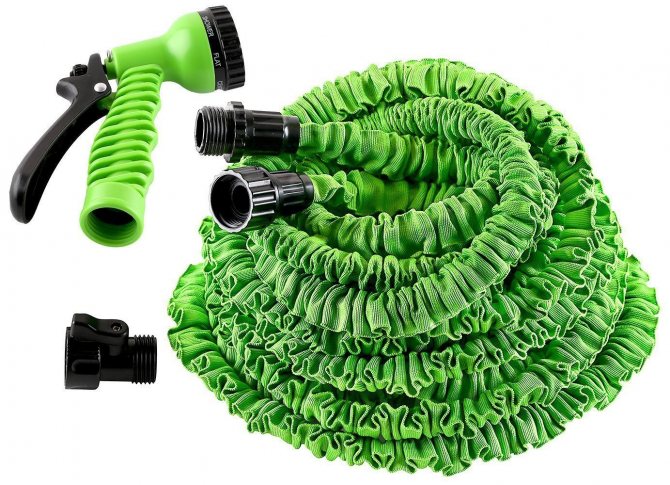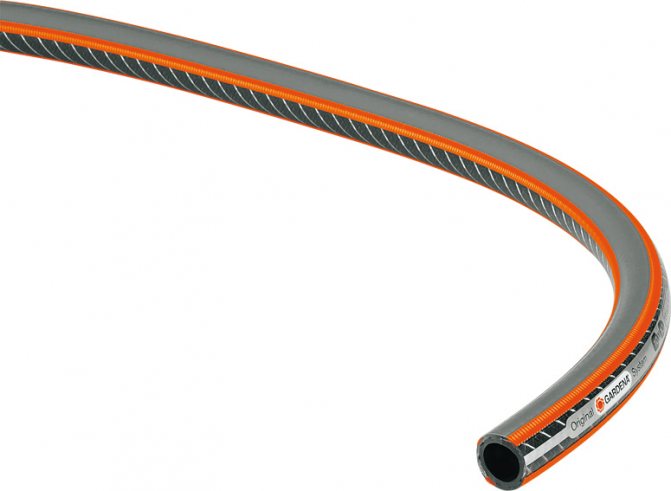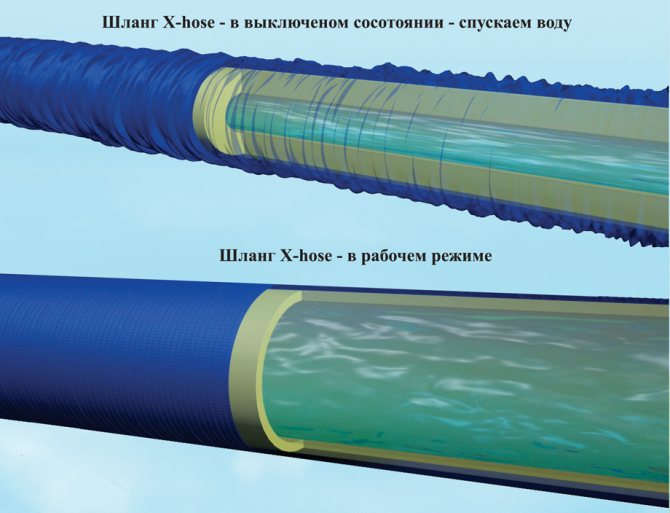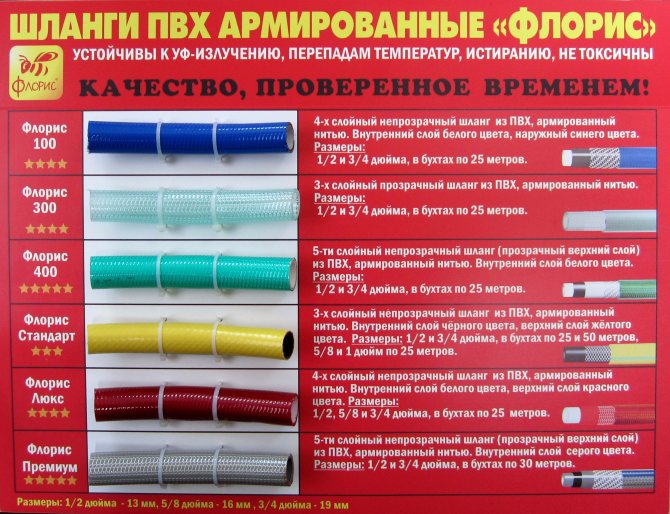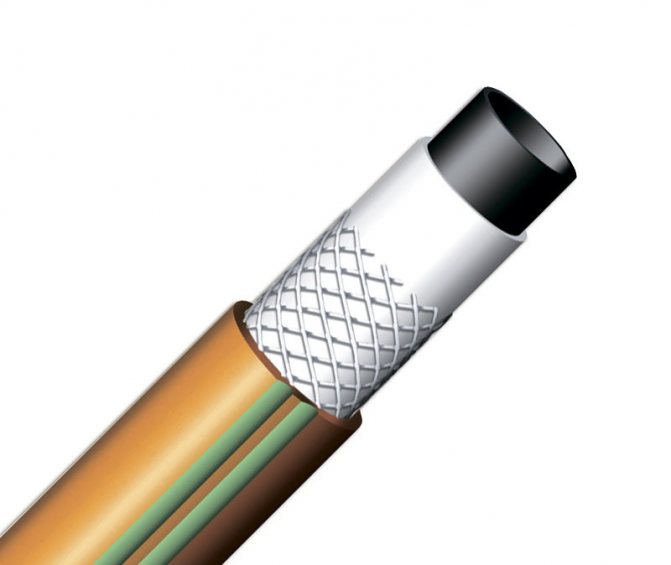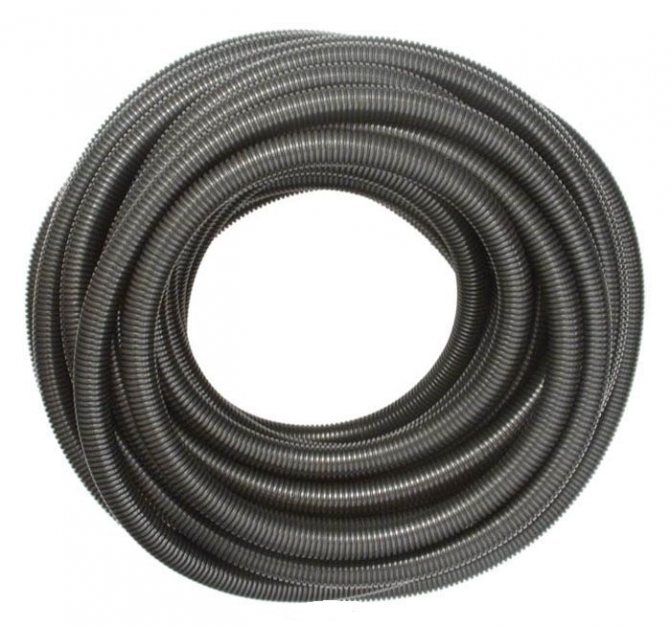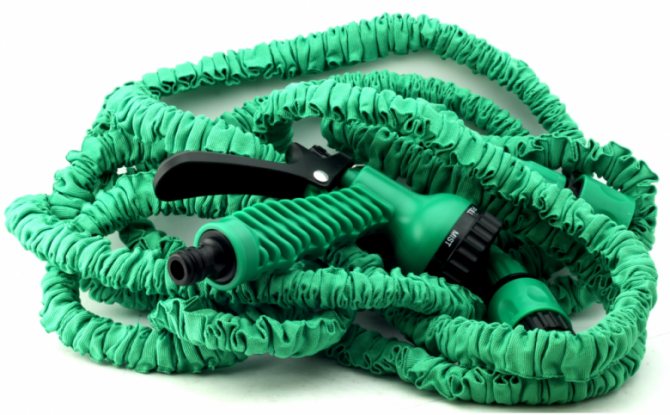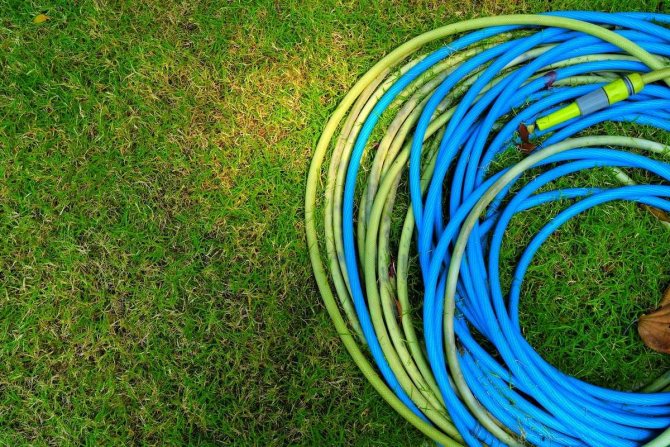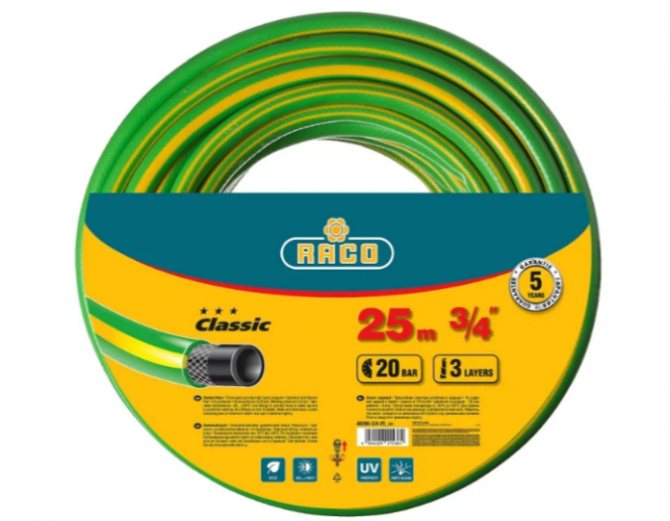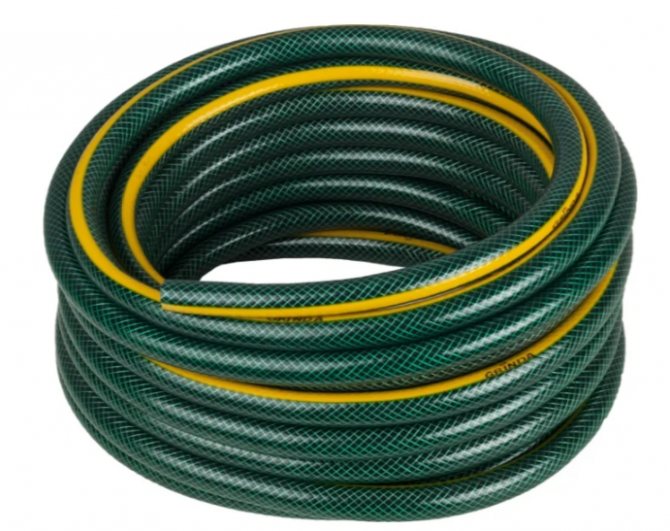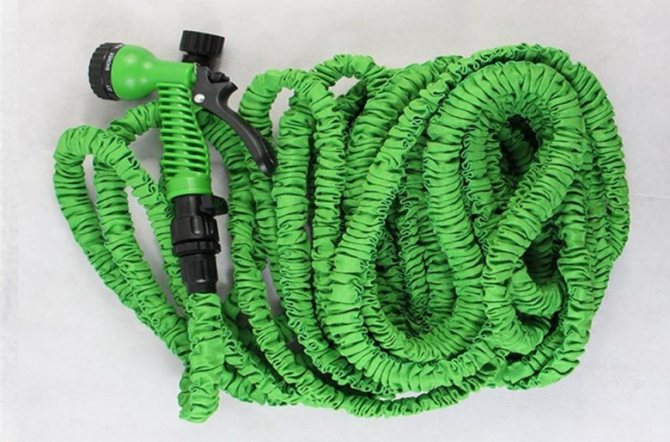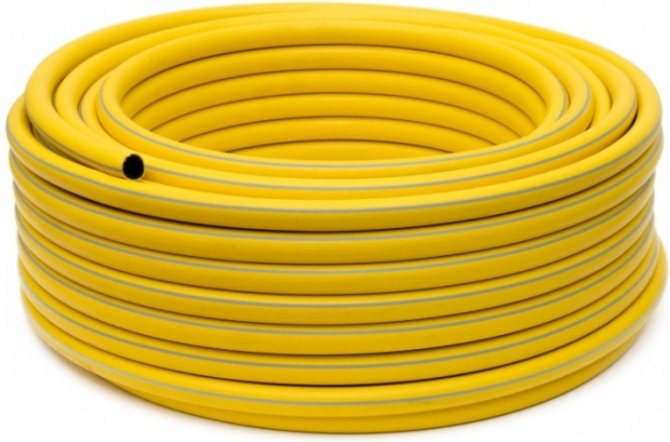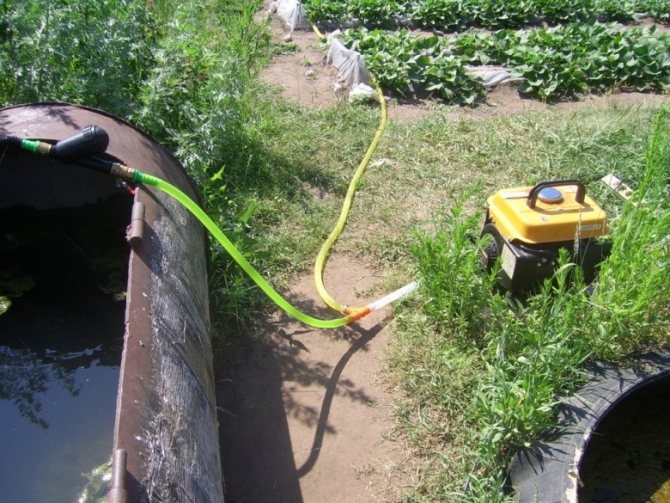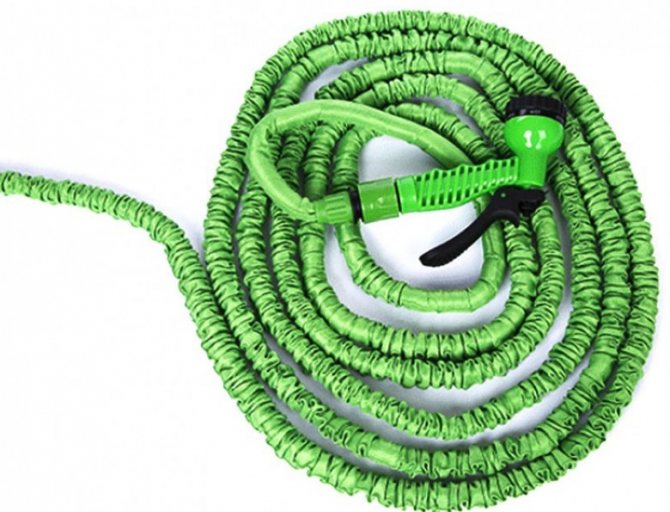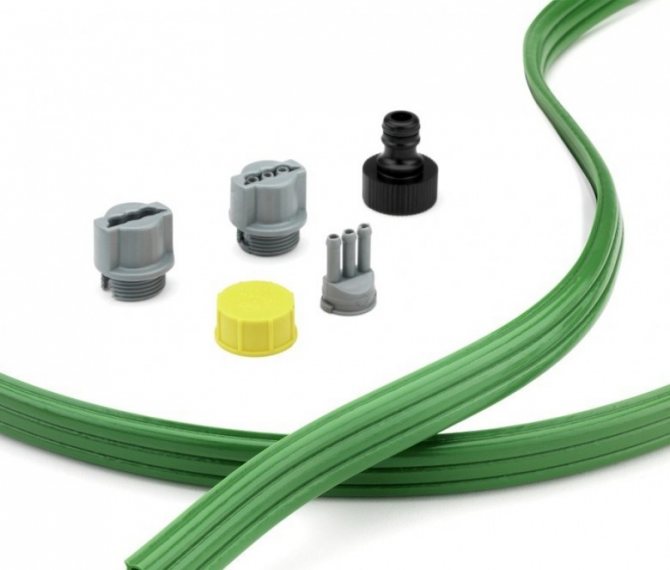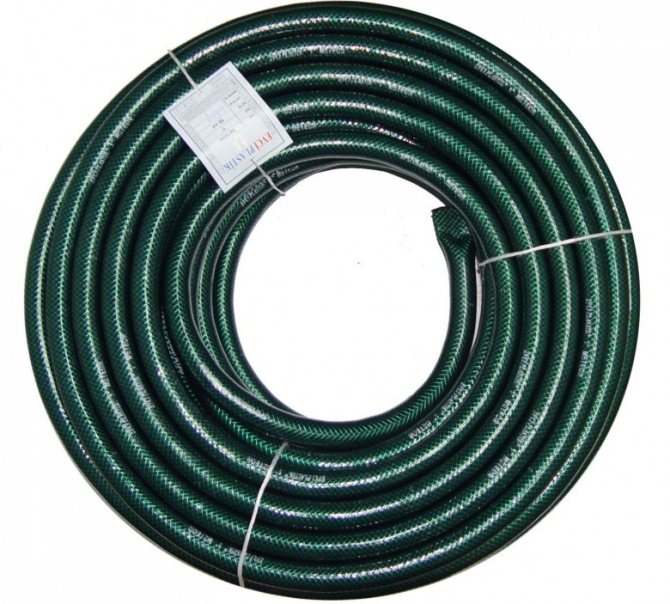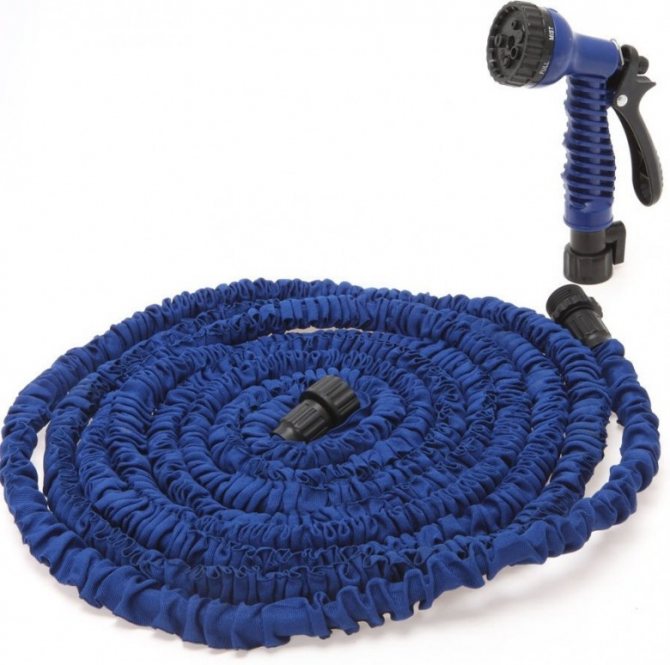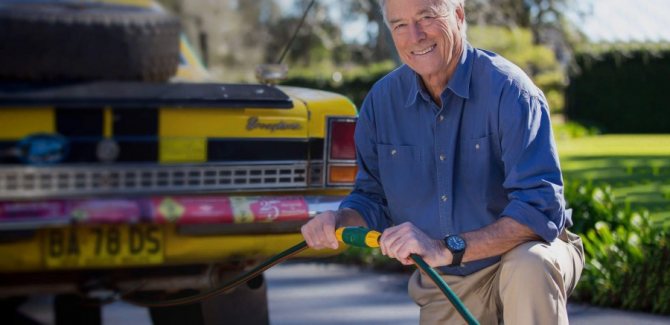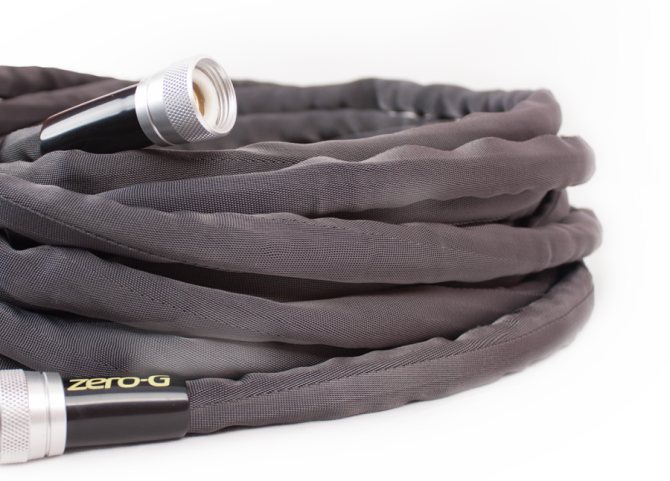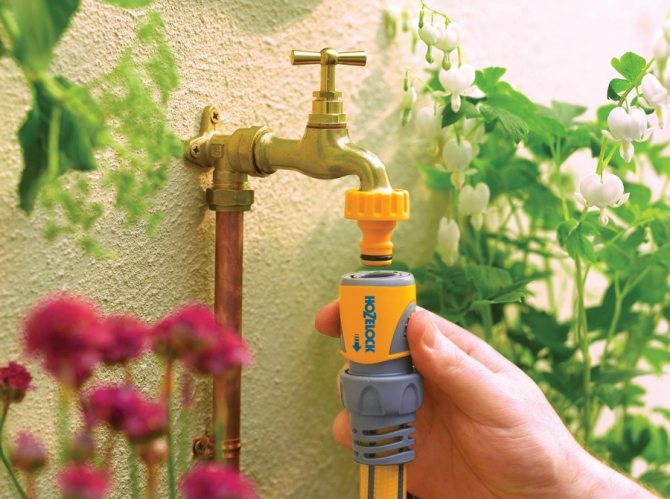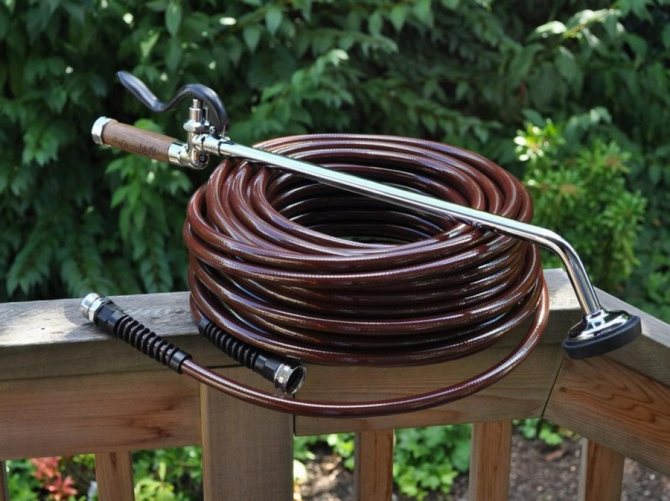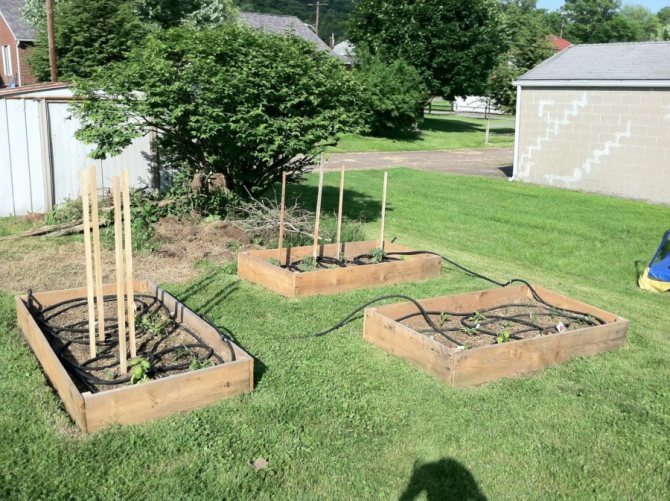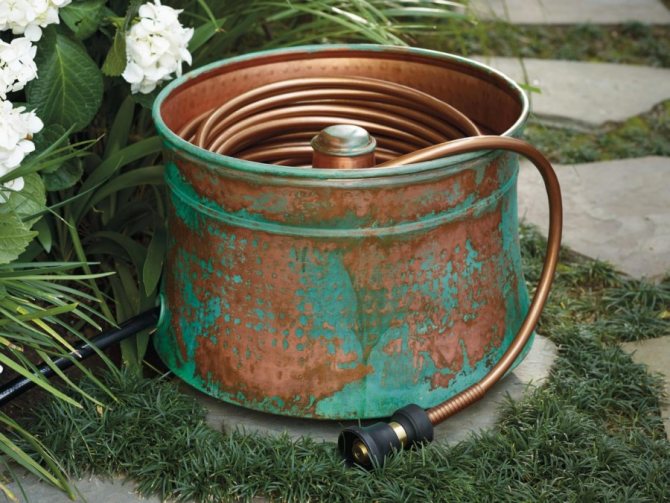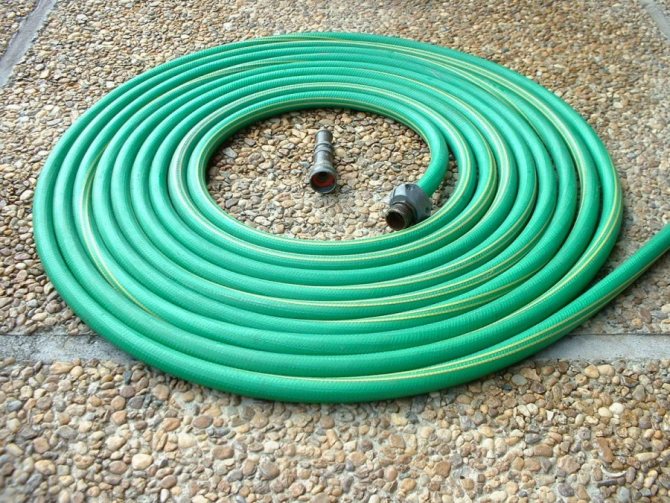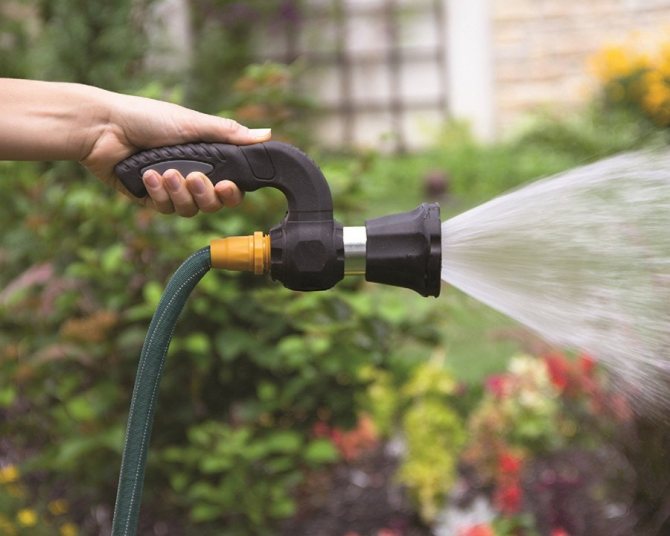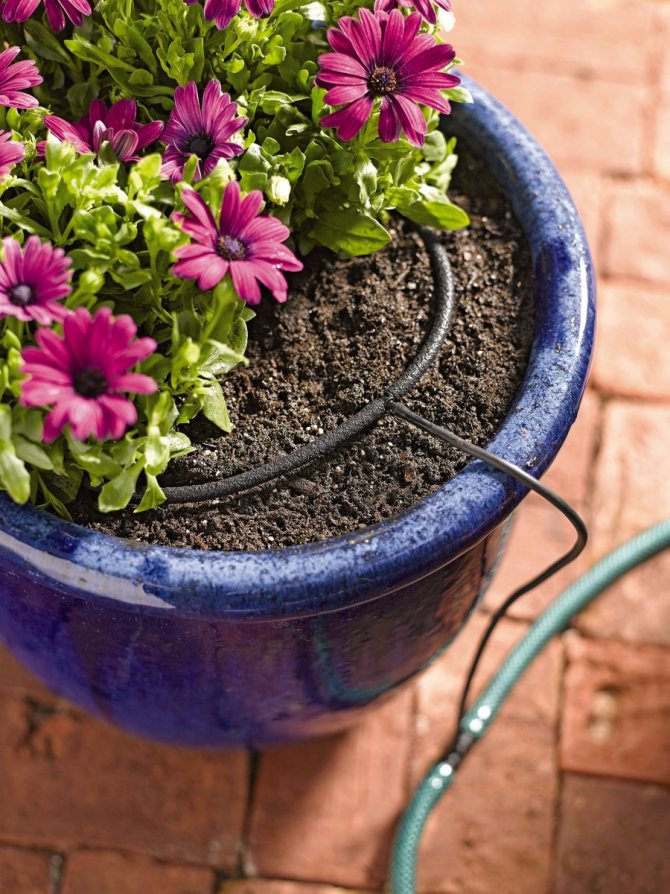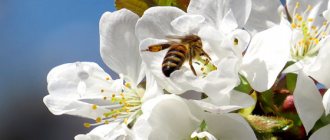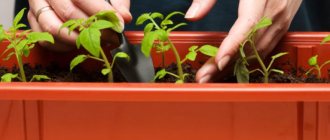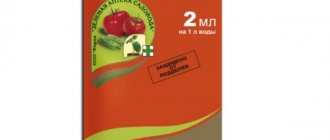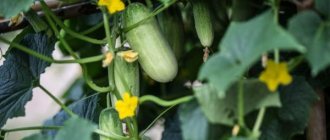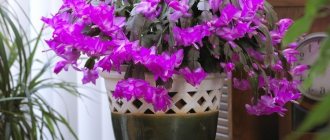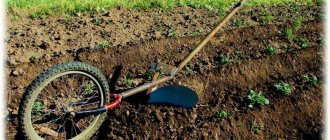It is difficult to imagine a summer cottage that does not have an irrigation system consisting of garden hoses, all kinds of sprayers and, in fact, a water source. Moreover, regular watering is needed regardless of what exactly is grown - a lawn, vegetables or flowers. And to ensure ease, simplicity of work, you need to know what kind of irrigation hose should be used in a given situation.
When choosing a garden hose, pay attention first of all to the future conditions of its use. The fact is that the hose can be either positioned on the beds for the entire period of operation, or permanently twisted / moved. This must also take into account the simultaneous load, as well as the water pressure. Different types of garden hoses have their own advantages, which, if mishandled, may well turn into disadvantages.
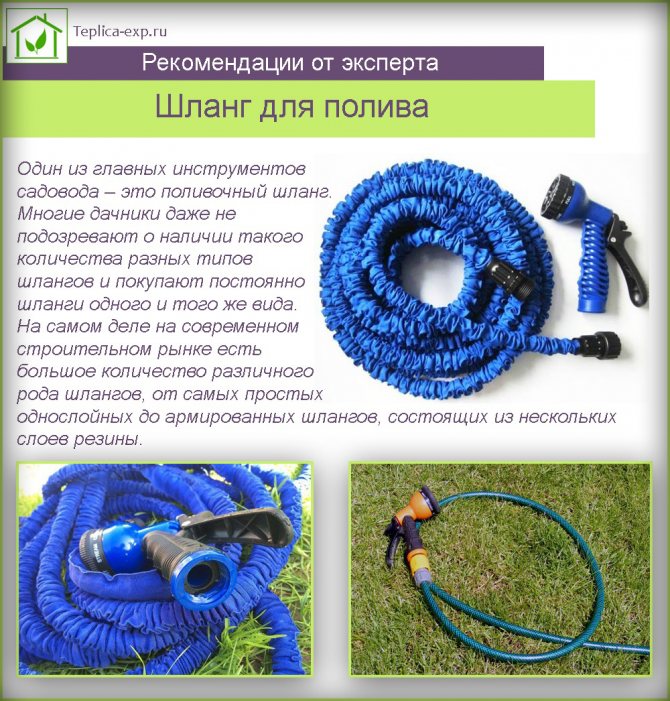
Irrigation hose
In the store: green, black, yellow
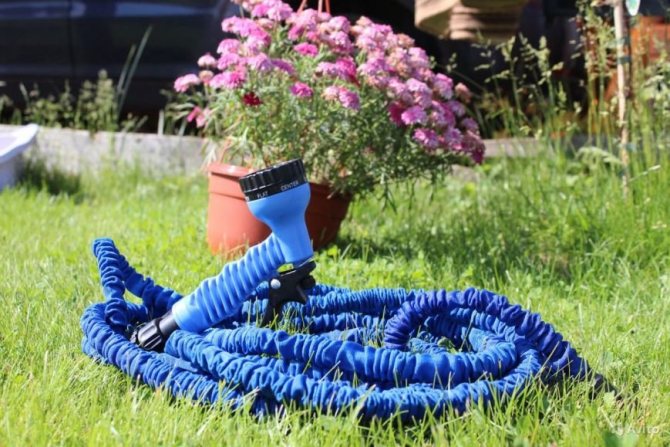

How to choose a hose in a store: by price, color or length? In large stores, popular models are disassembled, each customer has his own argument. All racks are stacked with neat bundles of multicolored hoses.
Lightweight, seemingly weightless models stand out among them. There are heavy ones. You can immediately determine the durability of the product at a glance, which will last for several years, and which will fit for a couple of seasons. To care for your plants, you need the pressure-resistant head of your pump.
All technical parameters are indicated on the label for the hose. Managers often duplicate information on the price tag, the buyer immediately sees the main parameters. Not all hoses are packaged; sellers unwind the required amount from special equipment.
What should be on the label:
- diameter, measured in inches;
- working pressure, the higher the pressure of the irrigation hose withstands, the more powerful the injection technique is used;
- Wall thickness;
- material of manufacture;
- the presence of reinforcement;
- temperature regime of operation, not everyone can work in subzero temperatures;
- lifetime.
We will dwell on some parameters in detail and find out whether the inner or outer diameter is indicated on the label and what reinforcement is.
Estimate weight, operating temperature and sun resistance
Most of all plastic products, that is, PVC hoses, deteriorate from the sun. The plastic becomes cloudy and coarse. Look for a UV protected pointer on the label when purchasing. Often the color is chosen the one that you like best. At the same time, algae grows in transparent products, which impair the flow rate and hinder the operation of devices connected to the hose, for example, sprinklers. The most practical are bright colors, they are noticeable on the grass, it is more difficult to step on or damage them when mowing the lawn or aerating the soil.
Hose weight depends on material, diameter, wall thickness and length. Maximum length - maximum weight. When buying, consider what area you will irrigate and who will carry the hoses around the garden. The most common parameters of the weight of multilayer PVC are as follows: with a coil 15m, - up to 8kg; with a bay 20m - up to 10kg; 25m - up to 13kg. It turns out that, on average, a meter of an inch hose is half a kilogram with a coil. The weight will be less with a smaller section, for example, with a diameter of half an inch - 0.2 kg, with a diameter of 3/4 - 0.3 kg.A meter of high-quality thick rubber hose with a diameter of an inch, black, Russian manufacturers weighs one and a half kilograms.
Most often, for watering hoses, they indicate the operating temperature range of minus 20 to plus 60 degrees Celsius. This is more than enough for their use at any time of the year, except for winter. Please note that if you use the hose in cold weather with sub-zero temperatures, rubber and plastic will bend much worse. In order to prevent the inventory from spoiling, roll it up to cold weather and hide it in the room.
What material are the hoses
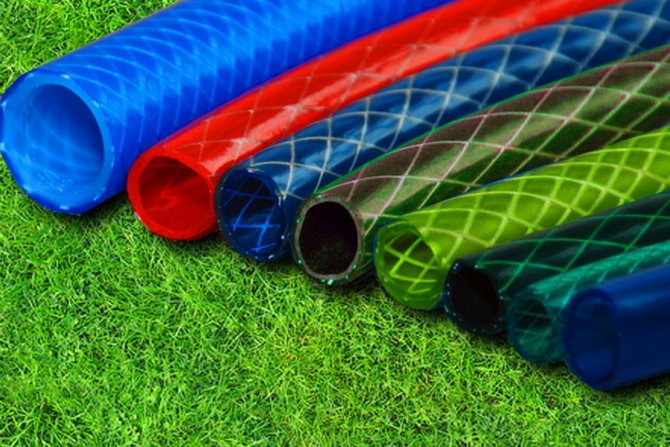

At the beginning of the article, a rubber modification was mentioned, in fact there are more of them. Manufacturers are trying to improve materials, make them more wear-resistant and with a long service life.
- Rubber is the best option for price and quality, most often you can see it in summer cottages. Withstands subzero temperatures, lasts more than 10 years. On the downside, many buyers indicate weight, the hose is heavy, and it is difficult to carry it around the site. Well suited for stationary summer water supply.
- PVC or polyvinyl chloride - very light, withstands good pressure. Of the minuses - fragility, service life of 3 years. The hose does not tolerate low temperatures, kinks and cracks appear.
- Plastic - Hoses made from this material are not very popular. They are produced in a corrugated form, which increases plasticity and flexibility. They work well in the warm season. The corrugation gives the hose a decorative look and is available in different colors. But they quickly deform and crack.
No. 4 - ROSTOK
Price: 1 429 rubles
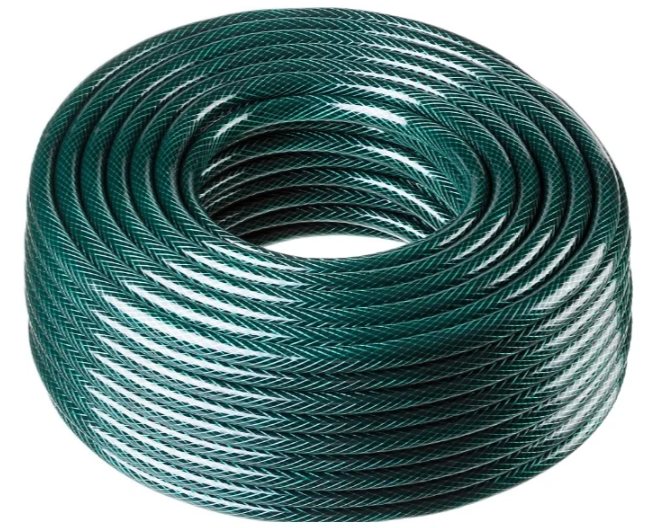

If there is a need to cover a large area, then this option is much better, because it has a length of 50 meters. True, the maximum pressure here is up to 10 bar. The hose is made of three-layer PVC.
This hose is made of high quality materials and reinforced with strong nylon threads to achieve good dimensional stability. The material withstands the sun's rays; algae does not appear on the inner surface. This is the best option that offers great lengths at a low cost.
The hose performs well in the summer, but it can easily deteriorate even in a slight frost.
Hose ROSTOK
Additional specifications
Hose performance is influenced by modern improvements. When buying, they also pay attention to this.
Layering
The single layer hose is the thinnest, the sheath has no additional inner or outer layers. They do not tolerate climatic changes, are not resistant to changes in the pressure of the water pressure. Used and stored at positive temperatures. It is mainly used for short overflows of water: from a barrel to a bucket.
Multilayer hoses are robust yet flexible and durable. UV resistant, high working pressure resistant. But at the same time, they are quite elastic, they curl well. They let through a large volume of water, which makes it possible to irrigate a large number of garden crops.
Reinforcement
Rubber or silicone plastic pipes, in the walls of which reinforced threads made of polymers or steel are soldered, to increase wear resistance and withstand high pressure. Frost resistance increases, but the weight of the hose increases. Well suited for summer stationary water supply, when the water supply system is stretched over the entire area during the summer and is removed with the onset of stable cold weather.
The strongest reinforced hoses can withstand pressures up to 40 bar. When choosing, you need to pay attention to the size of the cells - the smaller they are, the stronger the hose.
Stretchable hose
An innovative invention of recent years. Unique hose-in-hose design. The inner layer is made of rubber rubber, has a high stretch ability.The second, outer layer is made of nylon, designed to limit the stretch of the inner layer.
Filling with water, the hose increases in volume, passes a large volume of water through itself. After turning off the pump, all the water flows out, and the hose is reduced in size to its original size. It has a very light weight and an interesting design. It is gaining more and more popularity among buyers.
Pipe diameter
Hoses have an interesting pattern: the longer, the narrower the diameter should be. If the hose is connected to a water tap, the diameter should be slightly smaller, easily put on the tap and not fall off when the pressure is applied.
The most common diameters are ½ - 13 mm. and ¾ - 19 mm. The largest is 1 1/2 - 38 mm. The diameter of water pipes in Russia is measured by the inner rim.
Buyers mistakenly choose large diameter hoses, suggesting that more water will pass through. In fact, you can get the opposite result - at a low pressure, watering will be very slow. The best choice is a durable medium diameter hose.
Operating pressure
The hose with a large number of layers and reinforcement can withstand high water pressure up to 40 bar. A single layer will withstand a pressure of 2 bar. On reinforced hoses, you need to pay attention to the fastening to the tap; at high pressure, a heavy hose will fly off.
Recommendations: what to look for when buying
In order for the irrigation system to be inexpensive and to function fully and for a long time, you should:
- do not chase after cheapness, high-quality hoses cannot have an excessively low price;
- familiarize yourself with the sanitary certificate in the store - the material should not be toxic;
- take into account that for a long hose the cross-sectional diameter must be larger - this will provide a good head;
- if the hose will be constantly transferred to different ends of the site, it is better to purchase a mobile cart or reel for it so that the material from which it is made does not wear out longer due to regular friction against the ground;
- in order to save money, you can not buy nozzles, but make them yourself, for example, from a two-liter plastic bottle of soda water, adjusting it with the neck into the hole of the hose, and making holes of the required size in its bottom.
Minimum knowledge on which to choose a hose
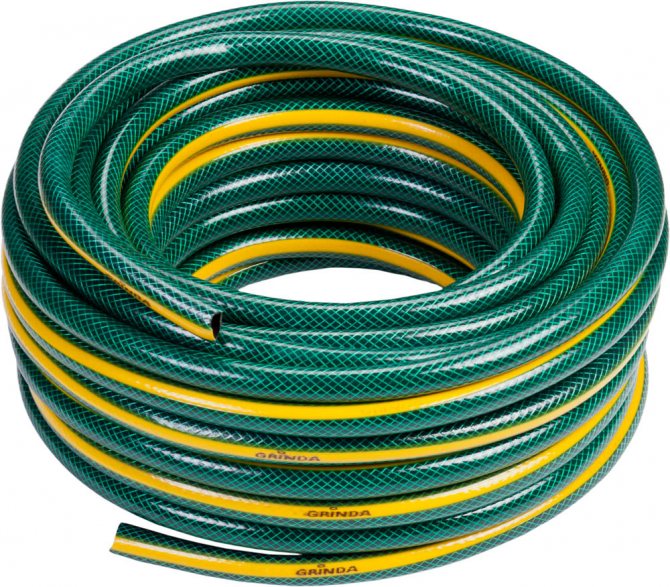

Tips for those going to get the hose today. Guide for orientation in the store, opposite the shop window:
- 1 layer is designed for a working pressure of 5 bar, the more layers, the stronger the hoses;
- many layers - higher price, 3-4 hose is considered optimal;
- the softest rubber will delight the owner longer than others;
- the nylon braid of the hose is the most durable;
- transparency is not relevant, over time, the inner part will grow bloom;
- the color of the hose has only a decorative effect.
Testimonials
- Sergey: “About three years ago I bought a reinforced Garden hose. Even then I paid a lot of money, I thought that they were taking for the name. But I was convinced that also for the quality! And I have it lying in the sun between the beds, and wintering on the street, and I pull it on the asphalt when I wash the car, but it does nothing - it serves, not a single break ”!
- Alexander: “I bought a hose for watering and washing the car at the bazaar, silicone, unreinforced. Lightweight, sometimes wringing, but after straightening the traces are not visible. I use the season, and then we'll see. ”
- Igor: “I have been using the hose for several years, I forgot who the manufacturer is, but I am very pleased with it. Then it was necessary to buy more, bought in the market, similar in appearance, green. In the summer they used a month - it began to break, and after a couple of months it became oak, it breaks. Disappointed, thrown away money. "
Store the hose correctly! It should not be left in the scorching sun, in order to avoid thermal deformation (the material may melt).Remove in the shade, after draining the water from it! For the winter, the hose is removed from the site, first checking for damage and eliminating them. You can store it in the house, garage, cellar.
maybe
Recommendations for care and use
When buying a thing, you need to know how to use it correctly. In summer, all hoses can be left on the ground, as long as they do not obstruct the passage, shade is the best option. Manufacturers recommend storing them rolled up. On a shelf or special device.
It is easy to wind on coils or spools, many of them work in automatic mode. They do not take up much space and are always available for watering. There are options on wheels, after twisting, just roll off to the storage location.
Storage features
Proper storage should be organized so that there is no damage, strong bends, and it is also important to organize the correct temperature regime.
The hose is twisted only after the water is completely drained. Check along the entire length and then start folding. Can be lightly bandaged to facilitate transfer and transportation to the wintering site.
It is desirable that the storage area be above zero in winter. At the dacha in winter, you can store in the cellar or take it to the apartment. Rubber hoses perfectly endure winter in an unheated room.
How to store
Usually, garden hoses are stored in basements of houses or outdoor outbuildings, when placing them, the following rules must be observed:
- Before storage, you should carefully read the instructions, many hoses are designed to work at temperatures not lower than -20 ° C, less often there are products that do not withstand the threshold of -5 ° C. In this case, taking into account the residual water that is stored in the inner shell, it is better to place them in a residential building and heated premises.
- At the end of use, water is drained from the sleeves and then wound into coils, trying to avoid kinks and twisting.
- On sale there are special drums or reels on which the products are wound; in their absence, such a structure can be made independently.
- If there is no coil, the products are placed on the shelves, trying to prevent the access of rodents, which often eat the polymer shell.
- It is best to store the hoses separately, avoiding heavy or sharp objects from being stacked on top of the coils.
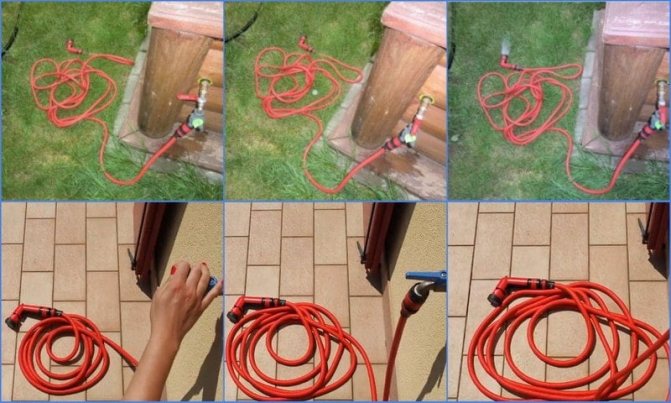

Fig. 14 Comparison of the behavior of a counterfeit (above) and an original (below) 2-fold extension of Fitt YOYO hose when supplied with water at a recommended pressure of 3 bar
Expandable hoses
The stretch hose was singled out as a separate category. Recently, this type of irrigation equipment is gaining high scores in the ratings. Buyers choose a convenient, lightweight format for both work and storage. With all its advantages, the price of expandable hoses is very low.
XHOSE Magic Hose Pro
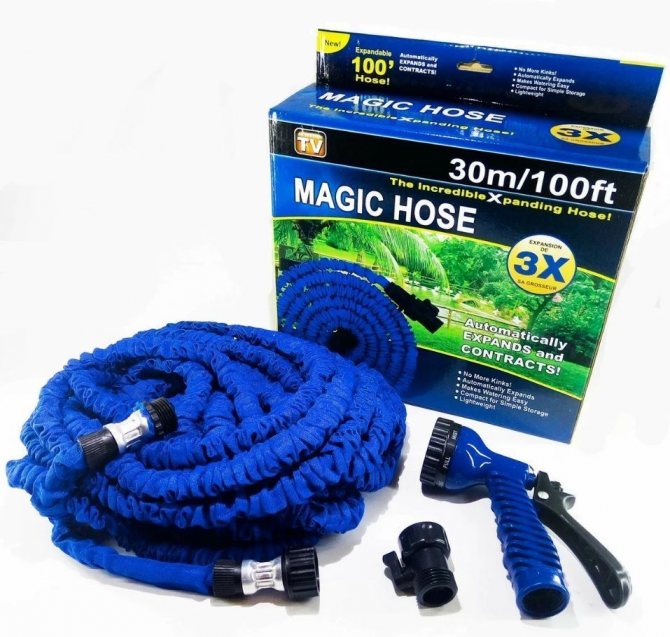

Price from: from 700 rubles.
Material: polyester woven fabric, elastic, plastic.
Length: 30 m.
Working pressure: up to 16 bar
Blue, green, changing its shape with the pouring of water. Increases 3 times with water pressure. The hose comes fully equipped for easy handling. It was the very first on the market, but many hose manufacturers have now started producing a similar version.
XHOSE Magic Hose Pro
Advantages:
- automatically decreases when the flow of water stops;
- does not twist;
- strong and durable;
- very lightweight;
- for watering, car washing, window cleaning and other tasks.
Disadvantages:
- does not work at subzero temperatures;
- requires a good water pressure.
Irrigation kit Sibrtech
Price: from 500 rubles.
Material: silicone
Diameter: 1.44cm
Working pressure: up to 6 bar.
The package includes adapters and a 7-mode pistol-distributor. The weight of the hose is only 0.62 kg, without water it is easy to carry around the garden.
Irrigation kit Sibrtech
Advantages:
- easy;
- comfortable;
- compact.
Disadvantages:
- it is difficult to buy a complete set;
- requires good pressure.
Irrigation set GRINDA
Price: from 1050 rubles.
Working pressure: up to 5 bar.
The excellent quality is proven not only by the good performance of the hose, but also by the strong screw connection to the water supply or alluvium. Several watering modes: hard spray, shower, flat spray, center, cone, weak spray, aeration. Allows each plant to be watered with special care
Irrigation set GRINDA
Advantages:
- does not bend;
- does not twist;
- 7 watering modes;
- does not require a lot of pressure.
Disadvantages:
- the highest price in this category.
Varieties of garden irrigation hoses, depending on their purpose
For conventional root watering using a sprayer or gun, a traditional hose of a familiar design is used. The product does not transform, keeping its original shape both in working and twisted state. This is a versatile, reliable assistant for the gardener at their summer cottage.
For drip irrigation, a special type of hose is used, which is a flat tape. There are holes on it with a certain pitch. A drip irrigation hose, the price of which depends on the manufacturer and starts from 70 rubles / m, fits on the site for several seasons.
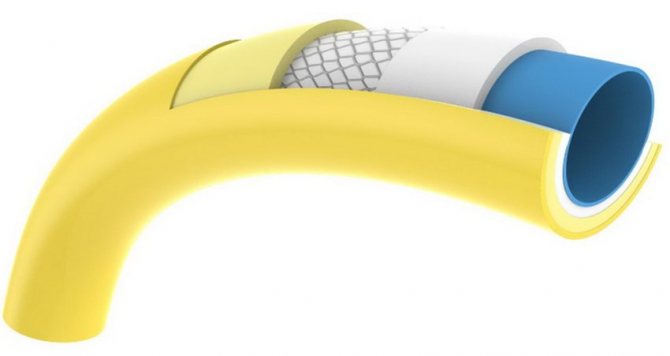

Structure of multilayer garden hose
An oozing hose is used for economical watering of garden beds and plantings. It is made from polypropylene or rubber. One of the inner layers is equipped with a labyrinth for the passage of water. On the top layer along the entire length of the product, micro-holes are located tightly to each other.
Helpful advice! The oozing hose is recommended for permanent watering of plants that are sensitive to drought.
The porous rubber irrigation hose has small holes to allow the water to flow slowly through. This type of product is used for watering plants on loamy soils and steep slopes, where the soil is prone to erosion due to slow moisture saturation.
For plants with shallow roots, a spray hose is the best option for gentle and even watering. Mist is formed around the plant by spraying water several meters through the holes.
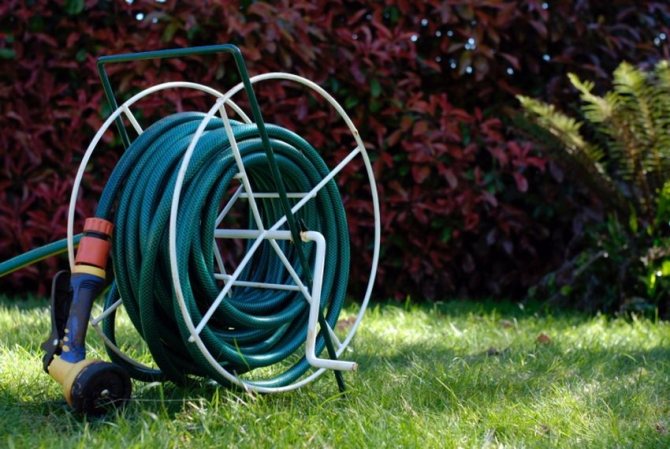

The long hose is conveniently placed on a special reel
Useful gadgets
A garden hose is an essential tool for watering your garden. It will perform the functions most effectively if you purchase several gadgets that facilitate work:
- wall bracket, winch, trolley with a drum;
- gun, sprinklers;
- adapters.
Wall holders
A simple fixture for storing garden hoses is a wall bracket. The simple, inexpensive bracket does not have a winding mechanism, but can be fitted with a reel. The solution is convenient, but the hose can be stored in one place, moving it is troublesome.


Winches
The most common solution is various types of winches. Poor quality plastic winches usually:
- thin,
- not resistant to UV radiation,
- quickly begin to crack, collapse.
When choosing a winch, you should check the mechanism of operation, it should provide a quick release of the hose. A good winch has features that greatly increase comfort:
- conveniently rotating, height-adjustable handle;
- storage space for the pistol;
- an outlet to prevent water leakage during transportation after use.
The body of a quality winch is made of ABS plastic, which is resistant to cracking, the frame is made of aluminum or corrosion-resistant steel. This combination of materials ensures a long service life.
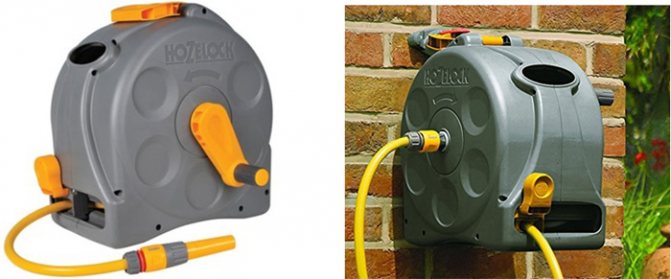

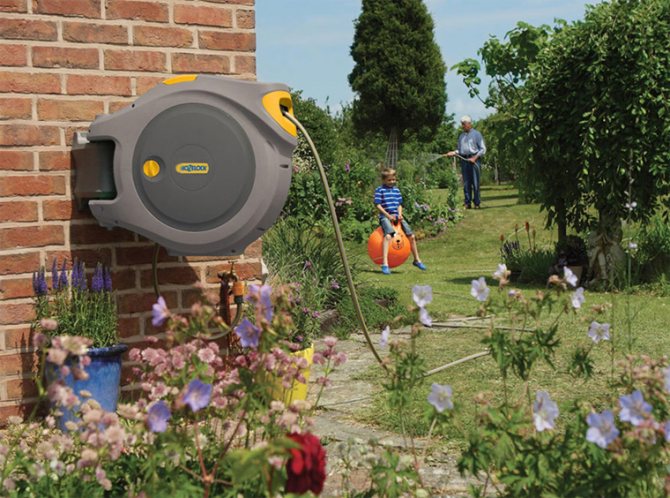

Truck
Garden hose trolleys are made of:
- aluminum,
- plastic,
- plastics.
Cart design includes:
- hose reel,
- handle,
- large, stable wheels to easily move the cart over uneven terrain.
The trolley will greatly facilitate the work of elderly people, owners of a garden of a large area. Sometimes the drum may not contain wheels, it has to be carried.
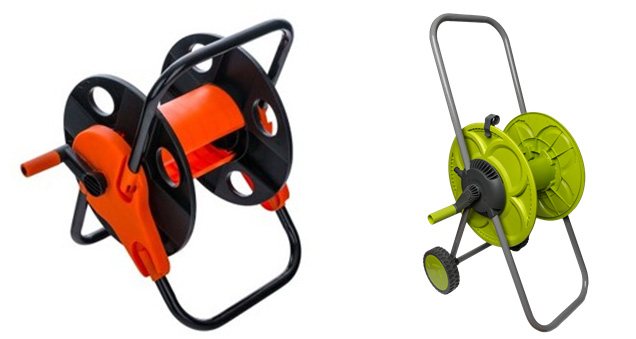

Sprinkler
An important element that facilitates the irrigation process and improves quality is the sprinkler. This is a small device that allows you to get a different flow of water with varying degrees of atomization. The sprinkler is a useful tool, without which it is difficult to water some crops.
There are 2 main types of sprinklers:
- manual nozzles;
- nozzles attached directly to the hose;
- stationary, installed in the ground.
Manual Sprinklers
Manual models are presented in the form of attachments that allow you to control the flow of water:
- special mount,
- pistol nozzle,
- lever arm.
Nozzles are made from:
- plastic,
- plastics,
- metal (the most durable and expensive).
The spray nozzles are attached using the quick connector included in the kit.
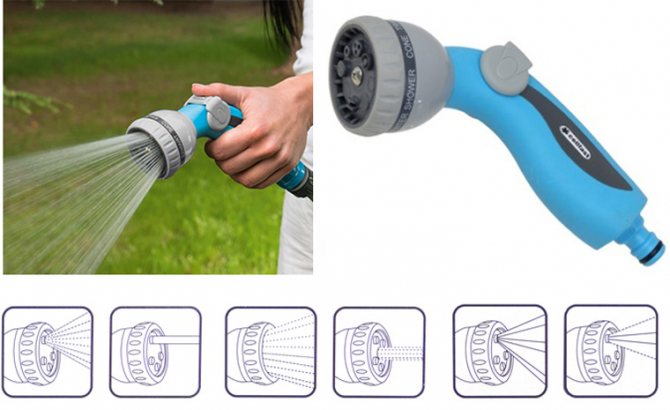

Stationary sprinklers
An interesting, convenient solution is stationary sprinklers fixed on a pin driven into the ground. A hose is supplied to the sprinkler, which is connected to it with a quick-release clamp. The system is placed on the irrigated area and the water is turned on. By adjusting the water pressure, the size of the flow coming from the sprayer is changed. Usually, the devices are equipped with a swing function - the sprayer releases streams of water in a directional way:
- to a predefined sector,
- round.
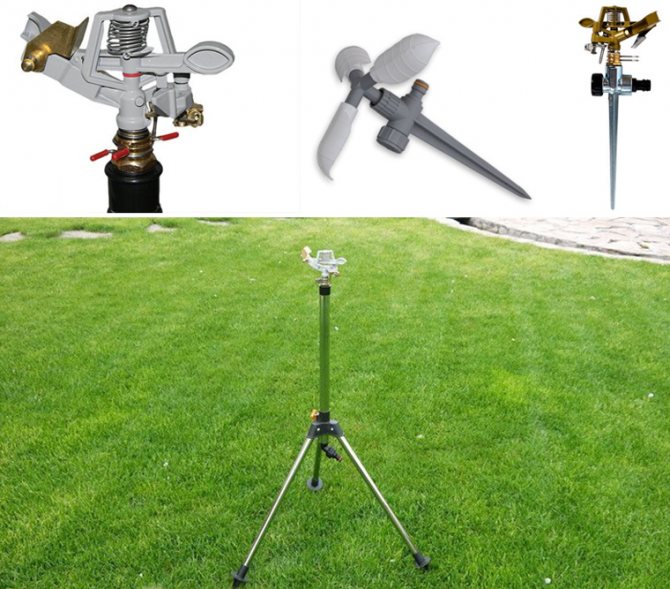

Microsprayer
A convenient, water-saving option is a micro-sprinkler. The device has a short range (up to 4 meters), can be successfully placed on a flower or vegetable garden and used as needed. Microsprayers are easy to install, but due to their limited reach, they are inconvenient for watering large areas, such as a large lawn.
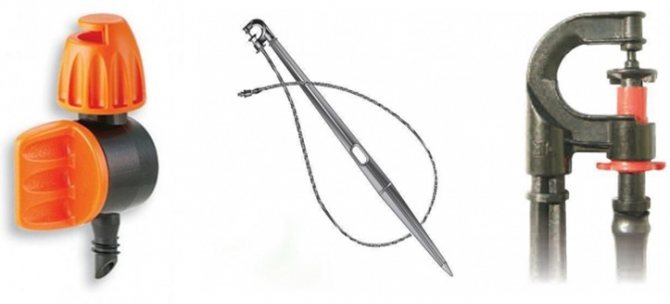

Summing up
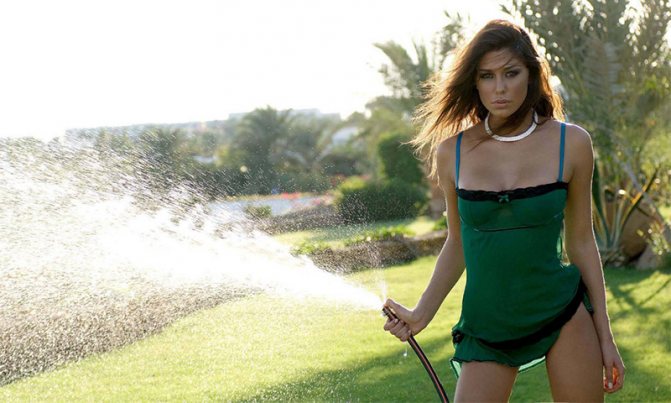

- The most common and practical are rubber and polyvinyl chloride or silicone reinforced. The former can be created from recycled materials and be toxic - they are suitable for irrigation. For drinking water supply, only food versions are suitable. The second and third are environmentally friendly.
- Plastic corrugated and nylon - devices are short-lived, but cheap, so it is advisable to keep them in reserve and use them periodically. When intending to use, it must be taken into account that they are designed for pressures up to 5 bar.
- To provide a larger water supply per unit of time, a diameter of 3 / 4ʺ, 5 / 8ʺ, 1ʺ is selected. If the pressure is up to 2 bar, the optimum size is 1 / 2ʺ.
- For ease of use, a cart with a reel is additionally purchased. Alternatively, you can simply buy the stretchable spiral version or the Xhose type modification, as a result, a comfortable watering of the flower bed will be provided.
- When irrigation is needed, the best solutions are full-length micro-perforated oozing hoses and special 3-way flexible drip pipes. They can be laid at the roots of plants both on the surface of the earth and in its thickness.
- To simulate natural irrigation, sprinklers with a nozzle are bought - such products work in several effective modes, including automatic.

